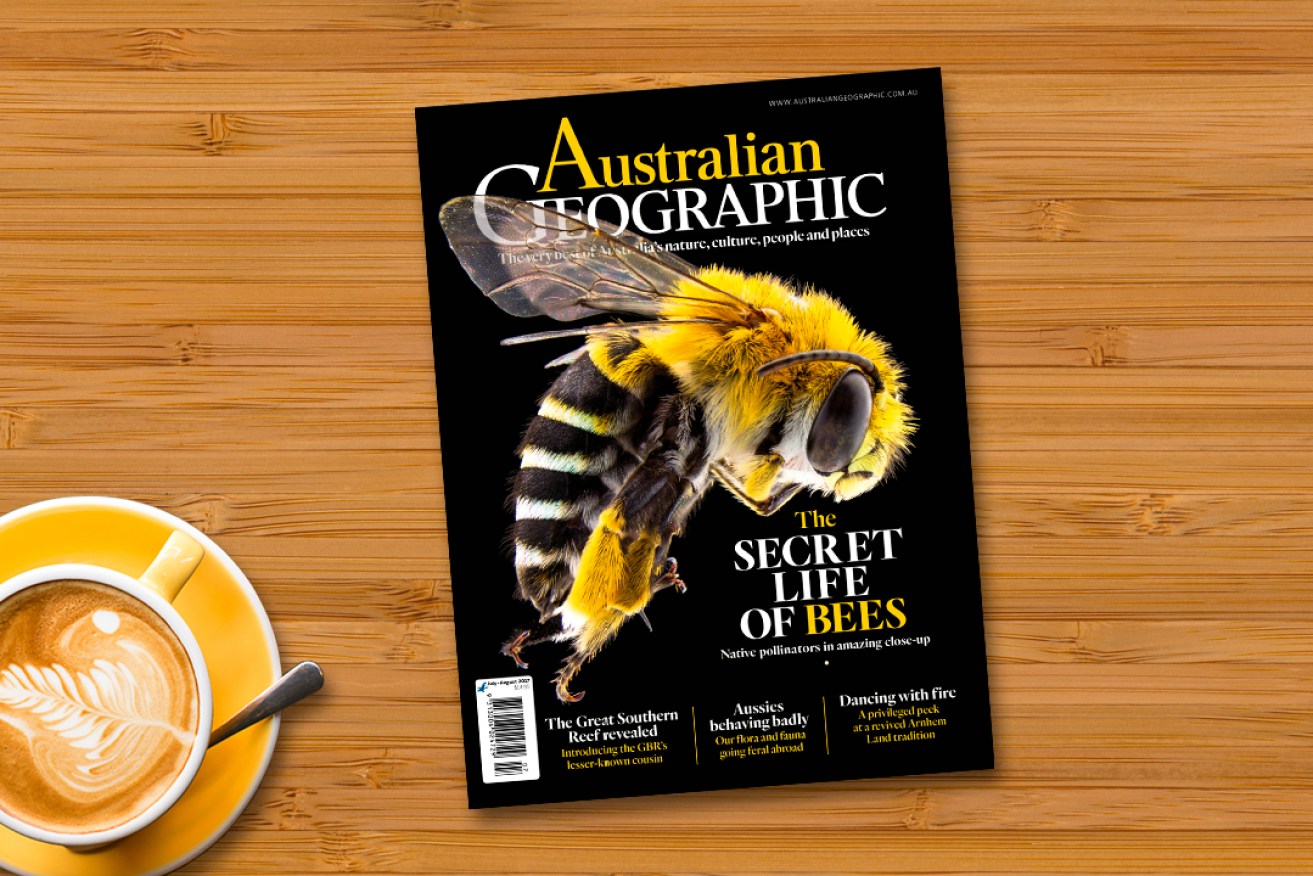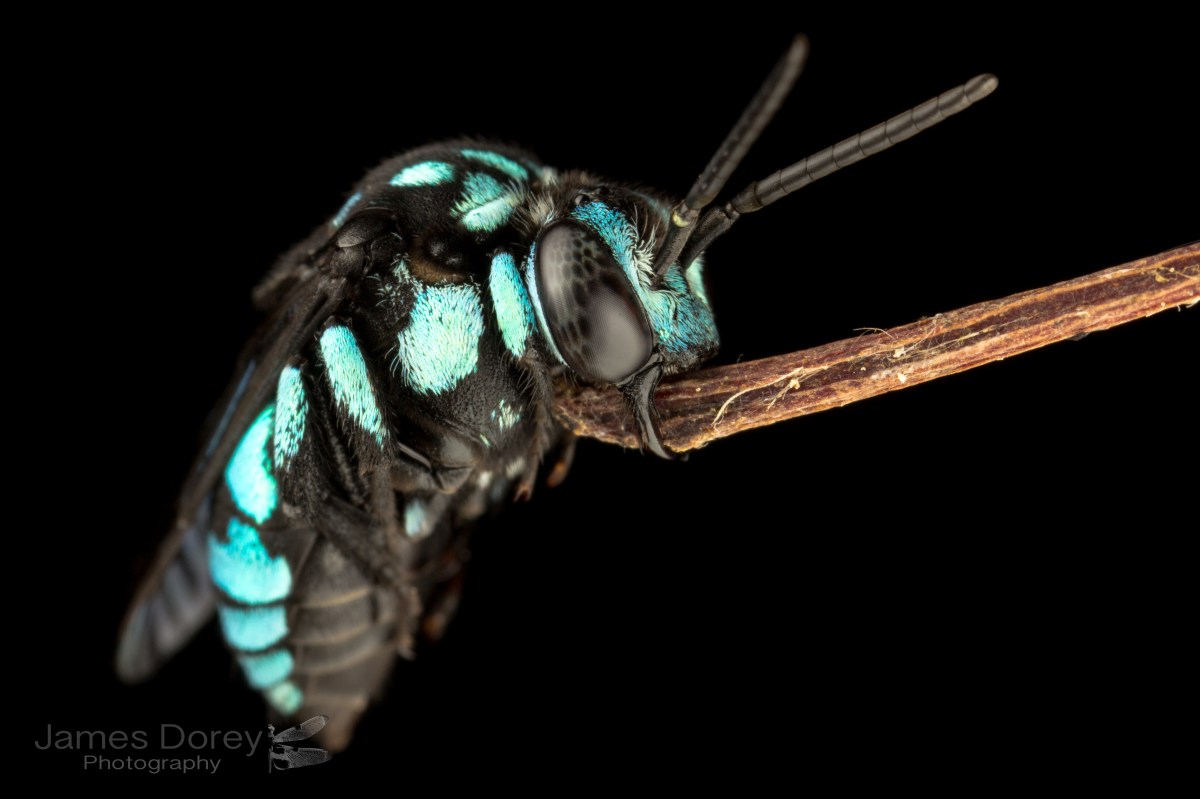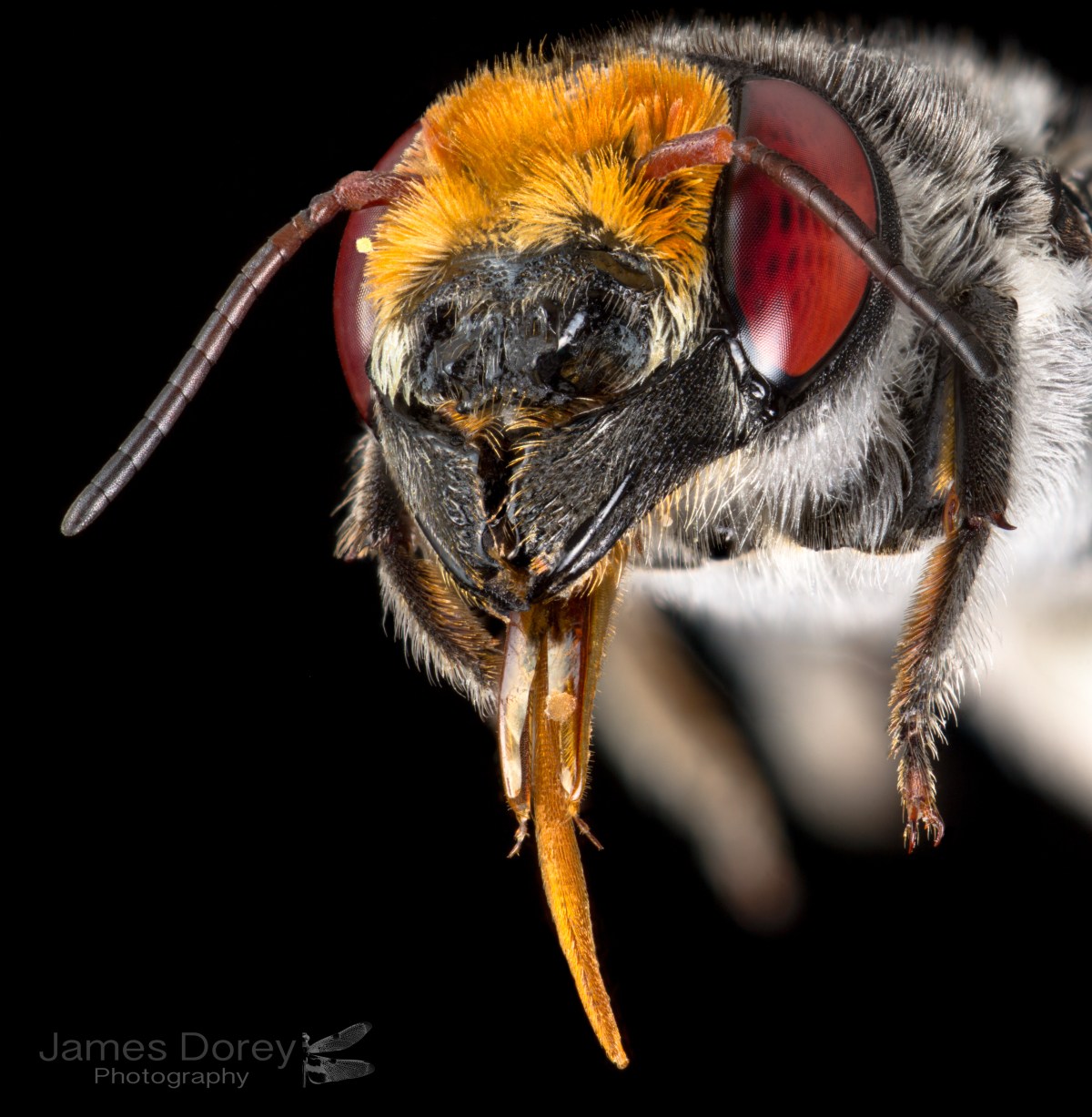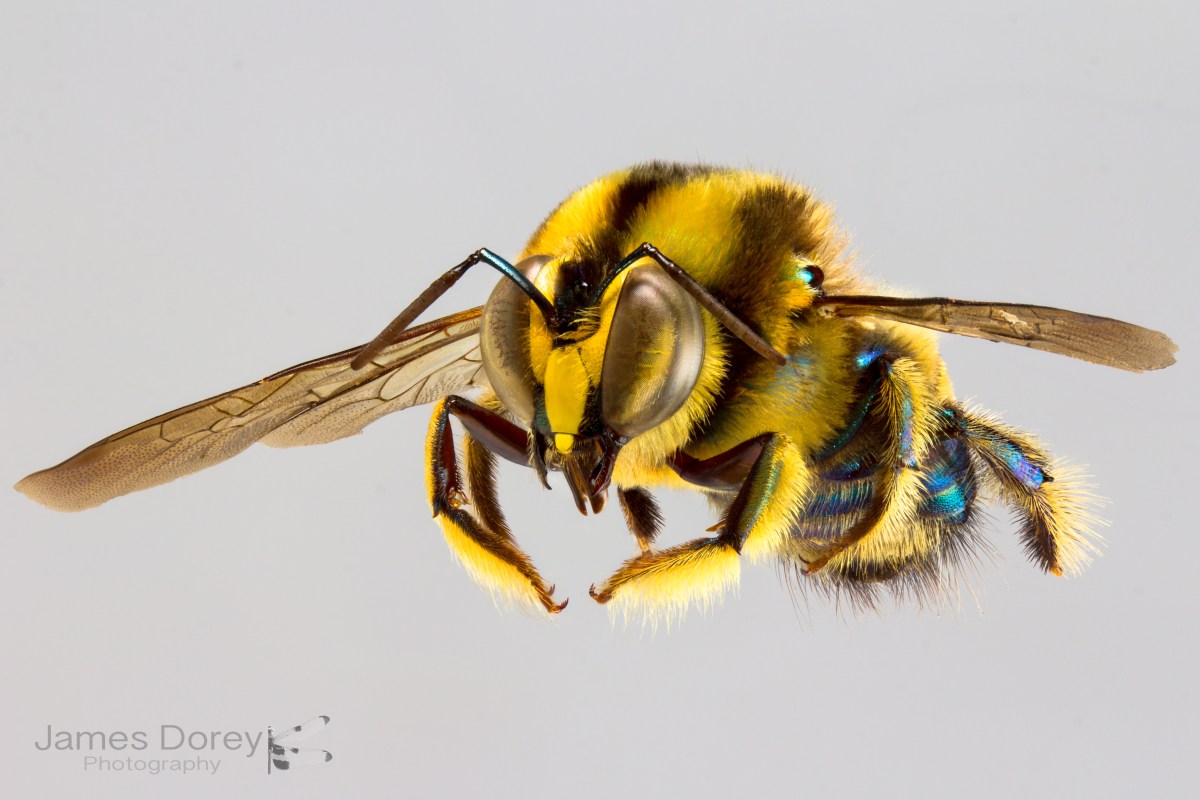Native bees fascinate nature photographer
They’re small and furry with a sting in their tail but look truly magnificent enlarged by a camera. So much so, dramatic native bee photos by Flinders Bachelor of Science (Honours) student James Dorey have made the front cover story of the latest Australian Geographic.

This month’s Australian Geographic features a cover photo of a Blue-banded Bee (Amegilla cingulata) captured by Flinders Biological Sciences Honours student James Dorey. A male golden-green carpenter bee (Xylocopa (Lestis) aeratus).
Over several years, the keen naturalist has perfected the art of using his camera skills to home in on the tiny and unseen, in particular native bees.
His impressive ability to capture all creatures great and small on his 100mm macro lens has opened up a new world to a growing audience.
One of his impressive photos – a detailed, close-up action pic of a native bee in flight appears as the main picture feature of the latest edition of Australian Geographic.
His love of nature, including fish, mammals, birds, plants and reptiles, started as a child growing up in Queensland and also in the rainforest near Byron Bay in northern NSW.
“I’m driven by my love of nature. For as long as I can remember I always have been,” he says.
After completing a bachelor of science in ecology and zoology at the University of Queensland, he discovered insects, spiders and “other tiny creatures that creep around unknown to us in their trillions”.
The focus on little critters is now his “mission”. So much so, he’s doing honours in Biological Sciences at Flinders University and joined the latest biodiversity project in Fiji.
The most recent New Colombo Plan field trip to Fiji brought a whole new world of insect photography before his camera.

Neon Cuckoo Bee (Thyreus nitidulus) – Many bees sleep outside of a nest at night, meaning that they can be found like this – roosting by locking their mandibles on branches and waiting for the light and warmth of the following day to once again begin their work.
In the Australian Geographic feature, he describes a round-Australia trip when he scrupulously photographed and collected hundreds of native bees – covering no less than 130 species.
Setting out for the extended road trip back in 2015, James writes about covering more than 26,000km in search of native bees.
“With my old Canon DSLR, three lenses, two flashes, a collection of butterfly nets and countless insect containers, I set out to collect and photograph as many different bee species as I could, travelling to every state and territory along the way,” he says in Issue 39 (July-August) of the magazine.

Megachile (hackeriapis) aurifrons (Leafcutter bee sp. Female) – Distributed across all of mainland Australia I’d recommend everyone to keep their eyes open for these beauties. A large black bee with a red face and red eyes, they are sometimes hard to miss.
He delighted in finding “tenacious and hard-working bees” all around the country – from the mountains to the deserts. In all, he writes: “There are more than 1,600 described native bees in Australia and an estimated 25,000 bee species worldwide.
“They are an extremely important group of animals and are wildly diverse in species, shape, size, colour and biology.
“Bees are the principle pollinators of many natural and agricultural systems. They pollinate almost 90 per cent of all the flowering plants on the planet.”

Xylocopa (Lestis) aeratus (golden-green carpenter bee M) – Big and fluffy, these male carpenter bees look quite different to their female counterparts, but certainly they are no less beautiful.
James, one of the Playford Trust honours scholarship winners from Flinders last year, is studying how past climate cycles could have helped drive speciation of Fijian highland cryptic bee species.
He and others on last year’s and this year’s Fiji trip have discovered new species. “I have also found undescribed species around Australia,” he says.
“There are many undescribed species and a lot of taxonomic work to be done on native bees if people have the funding and the time.”
See some more at www.jamesdoreyphotography.com.au





